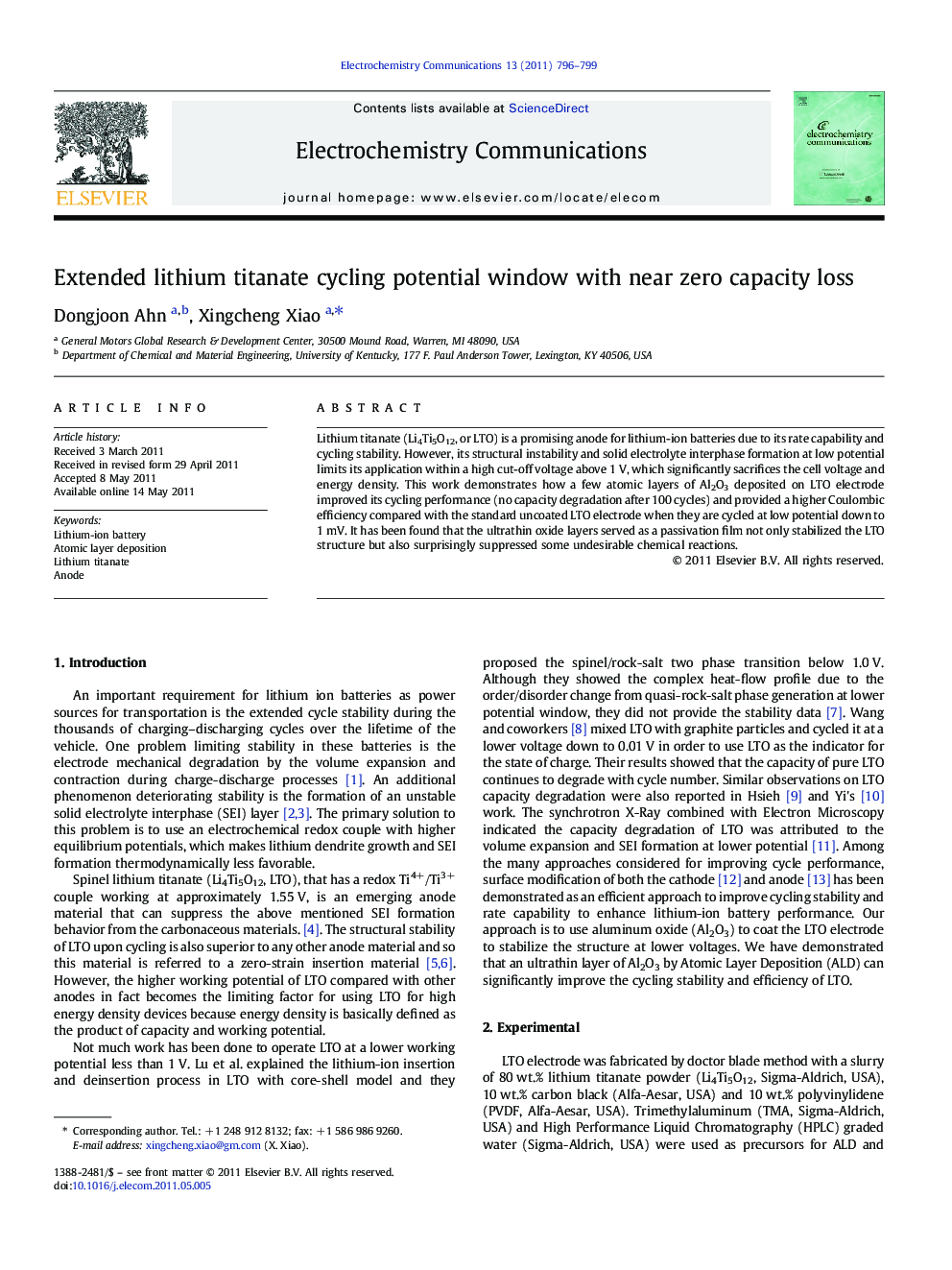| Article ID | Journal | Published Year | Pages | File Type |
|---|---|---|---|---|
| 179977 | Electrochemistry Communications | 2011 | 4 Pages |
Lithium titanate (Li4Ti5O12, or LTO) is a promising anode for lithium-ion batteries due to its rate capability and cycling stability. However, its structural instability and solid electrolyte interphase formation at low potential limits its application within a high cut-off voltage above 1 V, which significantly sacrifices the cell voltage and energy density. This work demonstrates how a few atomic layers of Al2O3 deposited on LTO electrode improved its cycling performance (no capacity degradation after 100 cycles) and provided a higher Coulombic efficiency compared with the standard uncoated LTO electrode when they are cycled at low potential down to 1 mV. It has been found that the ultrathin oxide layers served as a passivation film not only stabilized the LTO structure but also surprisingly suppressed some undesirable chemical reactions.
► Ultrathin oxide coating was conformally deposited on Lithium Titanate electrode, as proved by HRTEM images combined with EDX analysis. ► A few nanometer Al2O3 enabled the lithium titanate to be cycled at deep potential down to 1 mV vs. Li/Li+ with significantly improved cycling stability and Columbic efficiency with almost no capacity degradation after 100 cycles. ► It has been found oxide coating stabilized SEI and suppressed side reaction.
